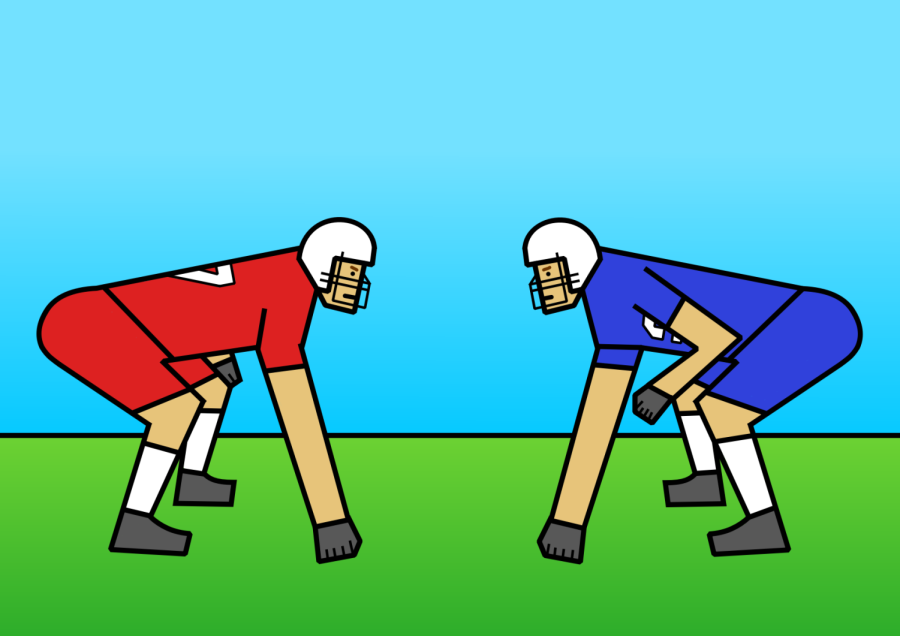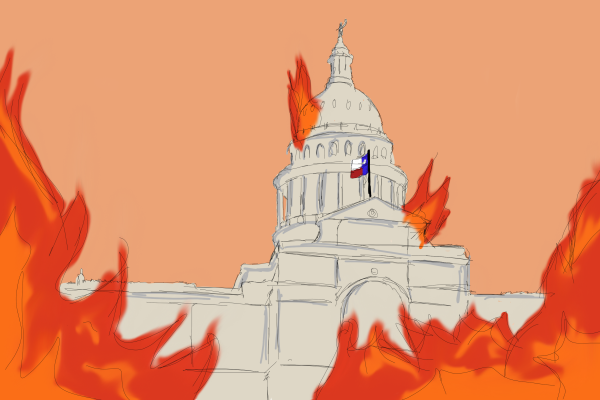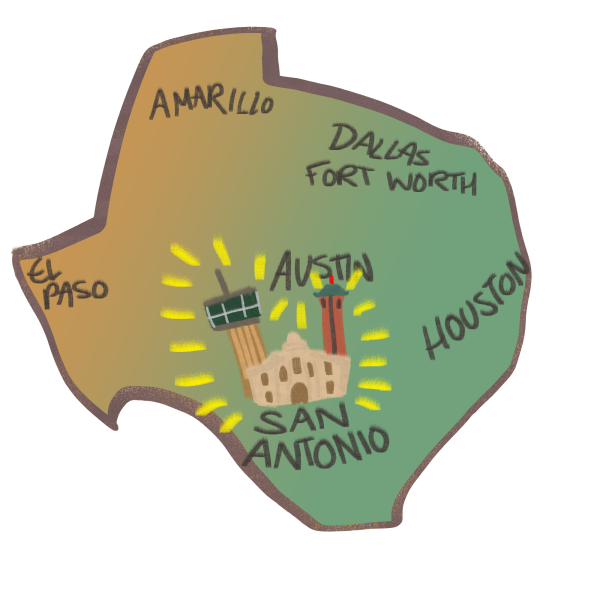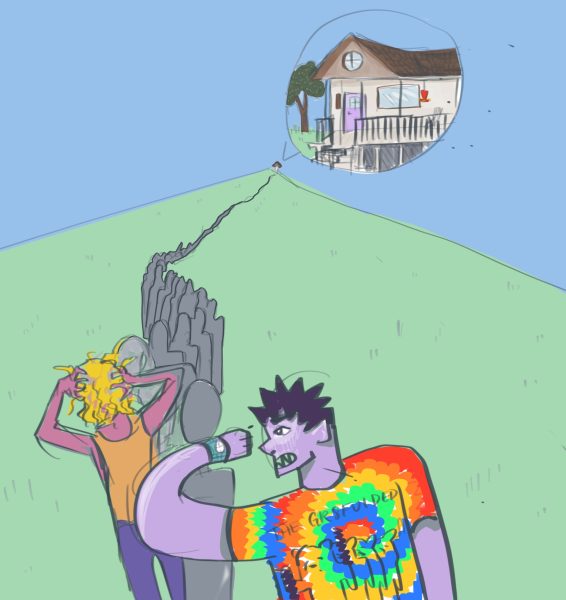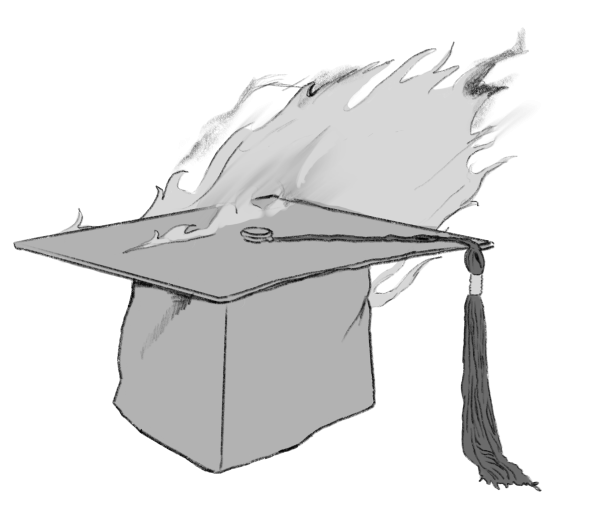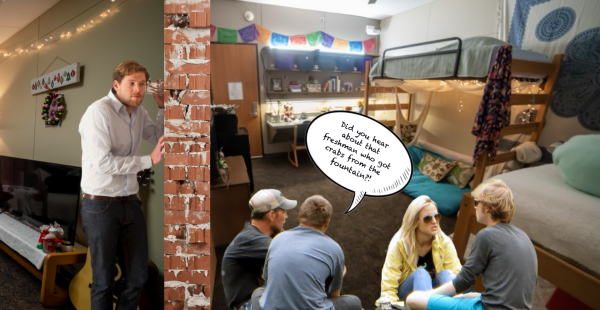Turf Wars
The future of artificial grass and its environmental impacts
In the wealthy neighborhoods surrounding Trinity, lawns are held to an impossibly high standard. They must be impeccably green and always cut, with overflowing pots of geraniums and petunias sitting on the front porch. To keep up this image, lawns must be extremely well-watered.
As intense heat waves become more frequent and the Edwards Aquifer runs low, lawns are subsequently harder to keep to picturesque standards. San Antonio relies on this aquifer, and in efforts to conserve this threatened water source, the city has enforced stage two water restrictions, meaning residents are only allowed to water their lawns once a week.
Walking around campus, I would never know the city is under water restrictions. Trinity uses extreme amounts of water to maintain the landscaping. Trinity must take further action to protect the Edwards Aquifer and conserve water, not just with landscaping, but with their field maintenance as well.
As outlined in Trinity’s Athletic Master Plan, the baseball and softball fields will be redone with artificial grass by the end of October. Despite serious issues such as pollution that accompany the installation of turf, the sheer amount of water saved using turf fields justifies the decision to switch to artificial grass.
There is a lot of controversy surrounding the environmental effects of turf. Turf causes contaminated runoff as water migrates synthetic materials and contributes to microplastic pollution. The infill material, which looks like synthetic dirt, is made from scrap tires that contain contaminants and heavy metals. These chemicals can spread to the air and waterways exposed to the production process, which involves burning rubber tires and sand. This seriously affects the Edwards Aquifer which is highly vulnerable. Implementing turf fields will increase the risk of contaminating our city’s sole water source.
While turf fields introduce an increased risk of contamination to the aquifer, just implementing one turf sports field saves anywhere from $0.5-1 million dollars annually. The fiscal resources saved by using turf fields can be redistributed to promote sustainable initiatives elsewhere on campus, such as introducing more native plants on campus to support the ecosystem native to our community or fixing the sprinkler systems which currently waste a significant amount of water on campus.
Water conservation initiatives are extremely important in hot, dry regions such as San Antonio. In many dry regions of the U.S., water conservation institutions are incentivizing residents to replace their lawns with turf to prevent water wastage. In 2011, these initiatives conserved almost five billion gallons of water. While I believe that lawns should not be replaced with turf, but with native plants and grasses to sustain local habitat, I do believe that sports fields play a different role. Unlike residential lawns, grass on sports fields cannot be replaced with native species of grass while keeping the same performance needed for physical activity. Therefore, sports fields should be replaced with turf as there are not many viable alternatives, whereas residential lawns should be replaced with native habitats.
Edwards Aquifer Authority officials made a statement on June 13 that the city requires higher conservation efforts despite San Antonio’s refusal to move to stage 3 water conservation. If large institutions, such as Trinity and other universities, do not increase their efforts to conserve water, the burden will be placed on citizens. The city will continue to implement higher stages of water conservation and individuals will have to live by standards that our own school does not seem to abide by.
Athletes require well-watered grass fields to function. So, it makes sense for Trinity to implement turf fields as the heat in San Antonio does not allow for the sustainable upkeep of grass fields. Installing artificial grass is a step in the right direction for sustainability at Trinity. With the extreme strain the aquifer is already under, Trinity is not doing enough. The university must strive to do more by continuing to seek out specific, effective measures to conserve water and protect the natural habitat in any way possible.
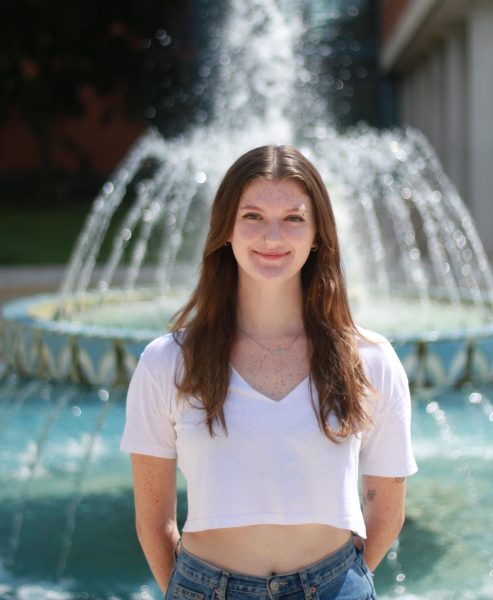
My name is Rachel Oliver (she/her), and I am a junior economics major and urban studies minor. I am the managing editor, and this is my third year working...

I'm Tony Rodriguez! I'm a junior from San Antonio, TX, majoring in math, and I worked as a copy editor for the Trinitonian about two years ago and am now...

